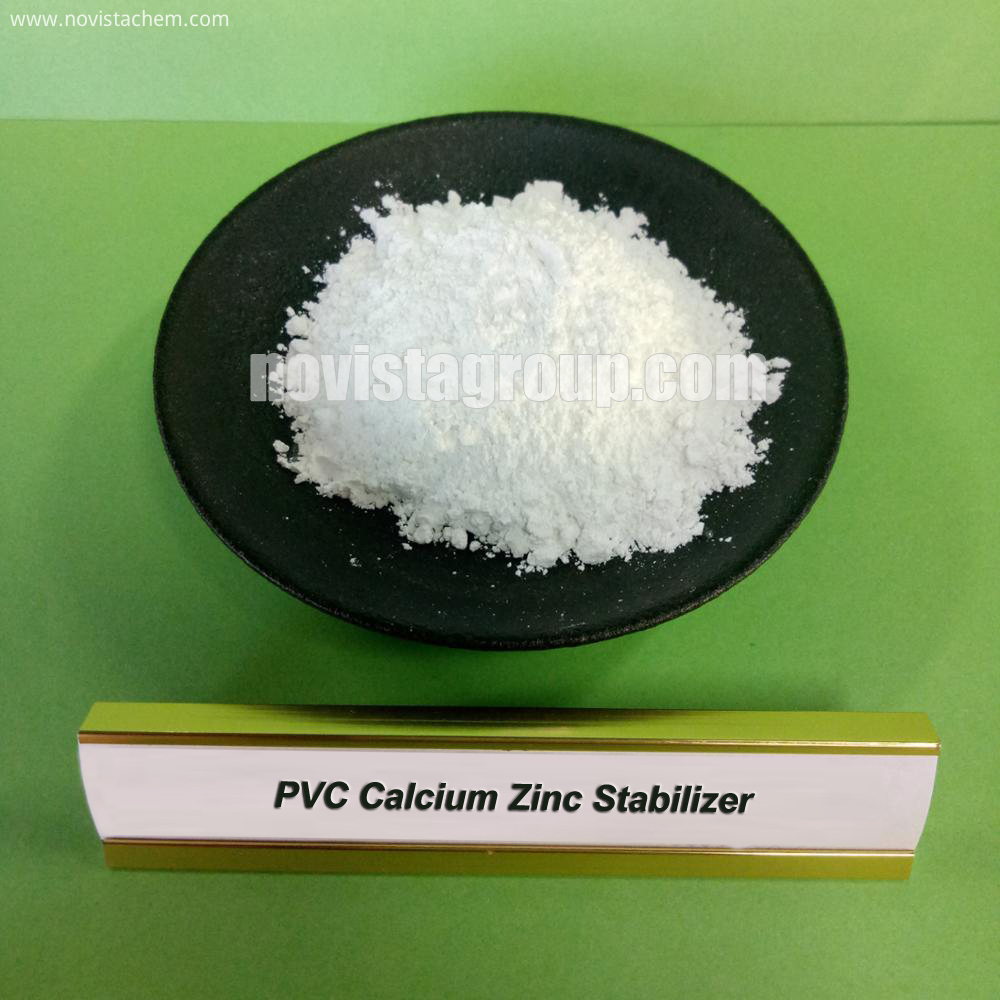PVC (polyvinylchloride) is a versatile polymer, either rigid or plasticized to yield a flexible plastic. It requires, however, a Heat Stabilizer.
PVC is employed in many applications ranging from flooring, cable, and film made from plasticized vinyl to pipe, profiles, and sheets processed from rigid PVC.
However, PVC can only be processed in the presence of heat-stabilizing additives to avoid changes in the chemical structure caused by elevated temperatures and mechanical stresses.
Over the last decades lead (Pb) stabilizers were used to stabilize most rigid PVC worldwide except in North America, where tin (Sn) stabilizers dominated. Both systems show similar price/performance ratios; technically, they are incompatible with each other, cannot be recycled together, and thus are used exclusively in selective markets.
Now a trend toward stabilizers based on calcium (Ca) and zinc (Zn) as well as organic compounds is emerging. Use of these additives is mainly driven by voluntary commitments, such as the Vinyl 2010 initiative by the European PVC industry, started by key PVC industry players in 2000. It is a 15-year-program to meet the challenges of sustainable development and continuous environmental improvement throughout the European PVC sector.
Stabilizer systems based on calcium/zinc (CaZn) deliver some advantages over lead and tin stabilizers. They combine easy handling with good final product properties and excellent outdoor weathering performance. Like lead stabilizers, the are mostly offered as customized one packs. On the other hand, they are more product-specific, often requiring custom formulation for individual applications, when compared to lead-based stabilizer systems.
The cost of CaZn stabilizers is now similar to lead stabilizers. To get the complete picture, prices should be compared based on a similar unit length of final product. At first glance CaZn is more expensive, but delivers a higher yield. Since their introduction in the 1980s, the dosage of CaZn stabilizers has been reduced considerably and they are, therefore, often price-competitive to lead.
The use of the different stabilizer systems differs not only from region to region, but also from application to application (see illustrations above).
Extruded PVC profiles are products with good physical properties that meet the most demanding economic and ecological requirements. Applications include window and door frames, shutters, cable ducting, siding, and gutters, to name a few.
In the profile sector, lead stabilizers are still widely used because of their good processability, favorable cost/performance ratio, and outstanding heat stability. However, CaZn stabilizers now possess a considerable market share in Europe since they have evolved out of expensive stabilizers based on metal soaps and polyoles to more elaborate systems comprised of effective inorganic acid scavengers and organic costabilizers.
In terms of processing properties, the tendency of CaZn stabilizers to plate-out in tools and calibration has been reduced to the same level as lead. When processed with suitable lubricant systems, CaZn-stabilized profiles compare favorably with lead-stabilized profiles in terms of processability and surface gloss.
Weathering performance is a critical issue in stabilization of building profiles. Testing indicates CaZn stabilizers achieve a better color hold than traditional lead systems. This effect is particularly relevant for dark colored profiles where additional cost savings may be realized by lower colorant requirements due to the reduced whitening pigment effect of CaZn compared to lead.
Liquid tin stabilizers used in the United States require a high dosage of titanium dioxide (TiO2) for sufficient weathering stability. Widely used solid lead stabilizers work with a much lower TiO2 level even under extreme weathering conditions.
Looking to the future, modest changes away from tin stabilizers in the United States are expected, whereas lead systems in Europe will increasingly be replaced by CaZn systems.
Analysis of stabilizers used in the pipe sector shows a similar situation. In Northern Europe, most producers switched completely to alternative stabilizers because of legislation or market pressure. In the United Kingdom, the permission to use lead in potable water pipes expired at the end of 2003. In South America, some large processors switched on a voluntary basis.
At the moment, the PVC pipes and fittings sector is seeing the development of lead-free stabilizers based on calcium compounds. The core stabilizer comprises an inorganic acid scavenger, a calcium soap, and additional lubricants to achieve basic stabilization of compact pipes. To improve early color, color hold, and weatherability of the final product, either zinc compounds or organic costabilizers are added to yield calcium/zinc or calcium-organic systems, respectively. Fine adjustments in composition can be made to serve a variety of applications. Up to now, calcium/zinc stabilizers offer price advantages over their calcium-organic counterparts.
Plasticized PVC has been used to produce cable and wire insulation and sheathing for more than 50 years. It is still enjoying a healthy market share.
For technical reasons, lead was traditionally used worldwide as the main stabilizer in the cable sector. CaZn systems for PVC cables and wires have gained importance during the last few years and their demand is still growing. Today the different heat stabilizers for cables and wires compete with each other in terms of cost, performance, and processing properties.
In addition, ecological considerations and statutory requirements have become increasingly important. The EU ELV (end-of-life vehicle) directive makes it difficult and expensive to recycle or dump lead-containing materials. Therefore, the automotive industry has moved toward CaZn. Meanwhile the majority of cables, especially for high-temperature applications, are stabilized with CaZn.
In Europe, CaZn stabilizers already hold a larger market share than lead. They provide excellent electrical properties, very good color, outstanding heat stability, good heat aging properties, and are in some cases superior to lead.
Lead and calcium/zinc PVC stabilizers are usually delivered as so-called one-packs, not only containing the heat stabilizers but also lubricants and acrylic processing aids. With such packaging they can be tailor-made to meet any specific customer need, regardless of processing performance or final product properties. Moreover, these one-packs are usually offered in various low- or non-dusting formulations, such as pressed granules and melt pastilles, in addition to classic powder mixtures.
The use of lead stabilizers faces restrictions from various sides. Calcium-based stabilizers offer an alternative. In addition to their technical performance, calcium-based stabilizers have also become more cost-effective, which will help continue the migration away from lead. To meet future challenges more effectively, a closer collaboration between stabilizer producers and processors is necessary.
For more, contact: mandyzhang@novistagroup.com






